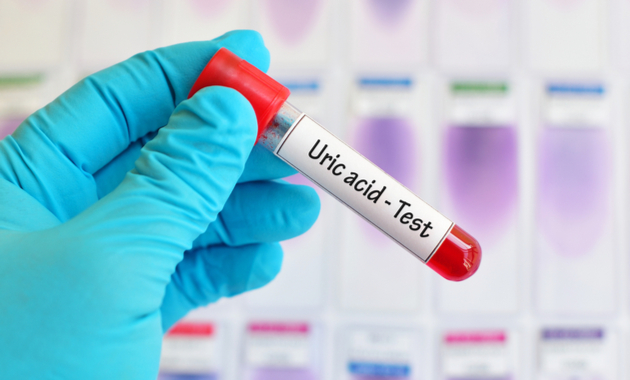
If your doctor has advised uric acid test, then it is probably to diagnose or treat a condition called gout in which uric acid crystals accumulate in the joints causing redness, swelling and pain. However, the uric acid level could also indicate underlying health problems including cardiovascular disease. So in this series of Know Your Numbers, we will be discussing what uric acid test means and what the results indicate.
What is uric acid?
Uric acid is the end product of purine metabolism. It is excreted by the kidneys and the intestines. Most of the uric acid produced is excreted through urine or feces. However, any changes in the production or excretion mechanism can lead to excess uric acid in the body, which in turn leads to its accumulation.
What are the normal levels of uric acid?
Depending upon the test methods and the labs, the normal range of the uric acid might vary. Hence, check with your doctor to understand your test results. The uricase method is the commonly used lab method for uric acid determination.
Generally, uric acid levels are considered high[4] if it is:
Greater than 7.2 mg/dL: Men
Greater than 6.0 mg/dL: Women
Uric acid levels are low[4] if it is:
Less than 3.5 mg/dL: Men
Less than 2.6 mg/dL: Women
Moreover, uric acid levels are influenced by age and sex. Men have higher values as compared to women, however, post menopause, the levels tend to be the same. Also, those with African American ancestry and with renal disease have hyperuricemia.
Other factors that can influence uric acid levels include:
-Exercise
-Diet
-Drugs
-Hydration
-Alcohol intake
What does uric acid blood test mean?
A uric acid blood test helps to determine the level of uric acid in the blood. The main causes for higher plasma uric acid are either lower excretion, higher synthesis or both. The blood level can help to understand the risk of diseases caused due to high levels of uric acid (hyperuricemia) such as:
-Gout
-Renal calculi
-Metabolic Syndrome
-Obesity
-Diabetes mellitus
-Cardiovascular disease
Recommended Reads:
Gout: Signs, Diagnosis And Simple Ways To Manage It!
Know Your Numbers: HbA1C Test For Diabetes
References:
Barr WG. Uric Acid. In: Walker HK, Hall WD, Hurst JW, editors. Clinical Methods: The History, Physical, and Laboratory Examinations. 3rd edition. Boston: Butterworths; 1990. Chapter 165.
de Oliveira EP, Burini RC. High plasma uric acid concentration: causes and consequences. Diabetol Metab Syndr. 2012 Apr 4;4:12.
Tausche AK, Jansen TL, Schröder HE, Bornstein SR, Aringer M, Müller-Ladner U. Gout–current diagnosis and treatment. Dtsch Arztebl Int. 2009 Aug;106(34-35):549-55.
Desideri G, Castaldo G, Lombardi A, et al. Is it time to revise the normal range of serum uric acid levels? Eur Rev Med Pharmacol Sci. 2014;18(9):1295-306.